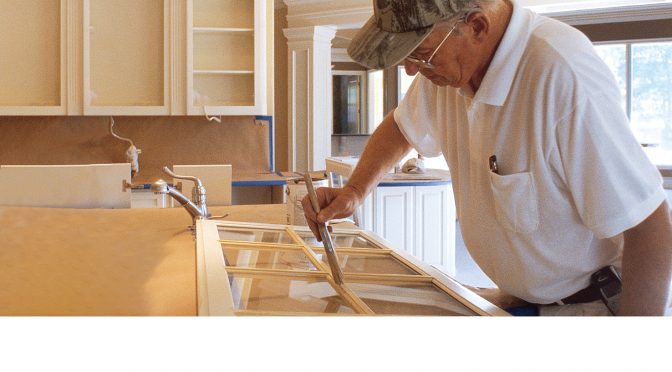Answers to pro painters’ most pressing questions by Rick Watson.
What paint and primer should be used on laminate cabinets or previously painted cabinets?
Prep is the key! With any paint project I recommend clean, dry, dull and sound. And with any surface prep I must include the warning* shown at the end of this article.
After removing the hardware, I would recommend that the cabinets be thoroughly cleaned with a good cleaner degreaser to remove all grease and oils that normally buildup on kitchen cabinetry over time.
Once cleaned, I would apply a test sample of Extreme Bond Primer in an inconspicuous area. Allow to dry properly and test for adhesion. Because of the exceptional adhesion of this product, sanding may not be necessary for most clean, paintable surfaces.
Once you have established good bonding/adhesion, you can prime the entire surface. Keep in mind: if adhesion is poor, or if any surface prep is short of clean, dry and dull, this may compromise the service length of the system used. A quality wood filler/putty should be used to patch holes or imperfections in the surface.
Many people request the use of a latex finish, and for that reason I would look at Emerald® Urethane Trim Enamel, in a gloss, semi- gloss or satin sheen. This product has excellent flow and leveling characteristics for a smooth and durable finish on cabinets, doors and trim. It also meets the most stringent VOC regulations with <50g/L VOC. It is available in a wide range of colors.
What should be used on worn down, previously stained and sealed wood cabinets?
Again, I recommend clean, dry, dull and sound. And like before I need to mention the warning* about surface prep at the end of this article.
After removing the hardware, I would recommend that the cabinets be stripped back down to bare wood. (If the stained and finished cabinets are in excellent condition, follow the procedures that I mention in the first question).
Once stripped, I would apply a test sample of Premium Wall and Wood Primer in an inconspicuous area. Allow to dry properly and test for adhesion. This step is key, because we want to make sure the sealer is no longer filling the pores of the wood and the primer is able to penetrate and adhere well to the wood.
Once you have established good adhesion, you can prime the entire surface. Again, keep in mind: if adhesion is poor, or if any surface prep is short of clean, dry and dull, this may compromise the service length of the system used. A quality wood filler/putty should be used to patch holes or imperfections in the surface.
For the same reasons I mentioned for laminate cabinets or previously painted cabinets, I recommend Emerald® Urethane Trim Enamel as the topcoat.
A warning note on surface prep
*WARNING! Removal of old paint by sanding, scraping or other means may generate dust or fumes that contain lead. Exposure to lead dust or fumes may cause brain damage or other adverse health effects, especially in children or pregnant women. Controlling exposure to lead or other hazardous substances requires the use of proper protective equipment, such as a properly fitted respirator (NIOSH approved) and proper containment and cleanup. For more information, call the National Lead Information Center at 1-800-424-LEAD (in US) or contact your local health authority.
This article was originally published in the Winter 2019 issue of PPC magazine. Rick Watson, director of Product Information and Technical Services at Sherwin-Williams, answers questions from pro painters in the Ask Your ProPartner™ column in PPC magazine.
Got a question for Rick?
CONTACT US

